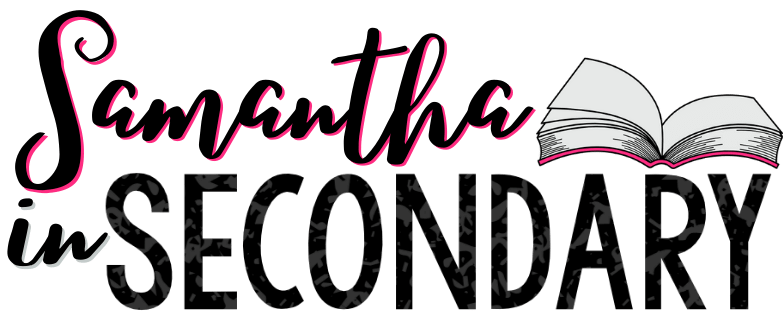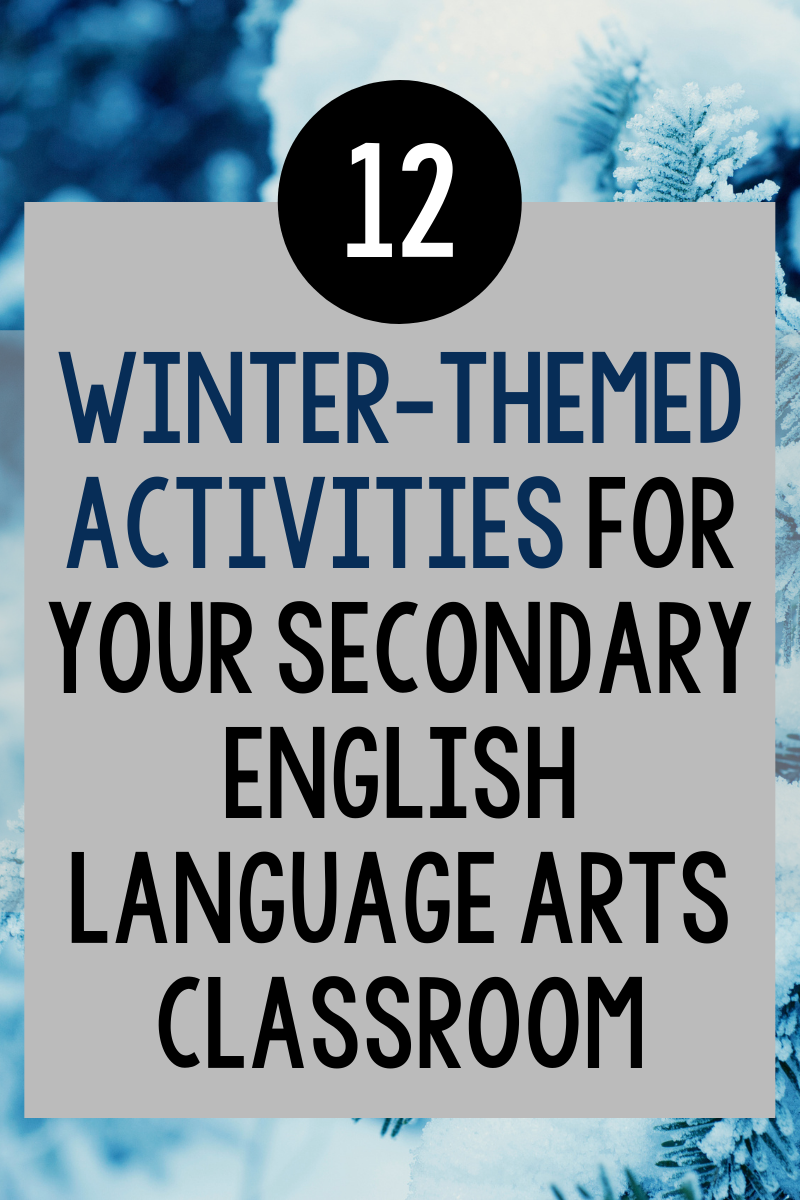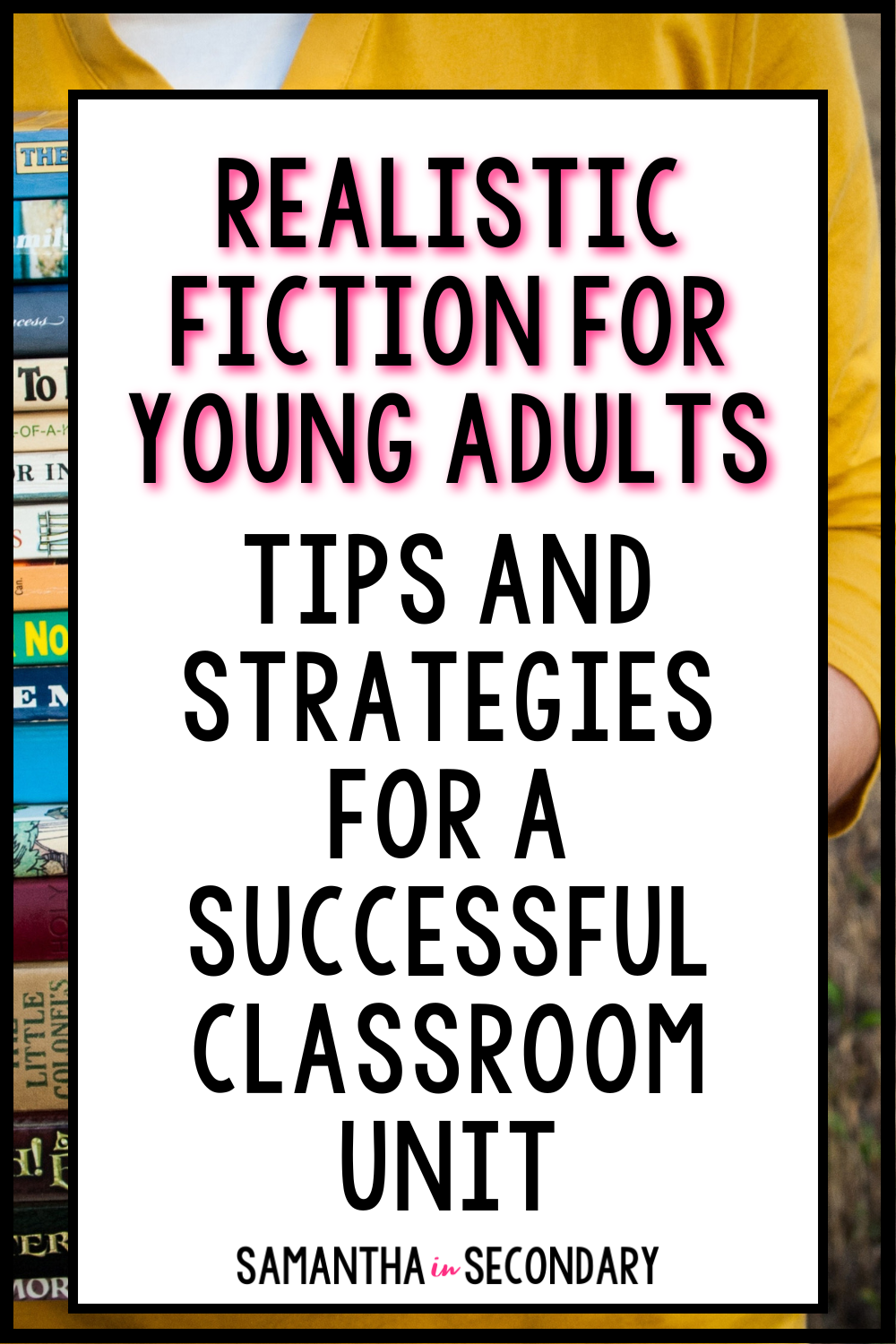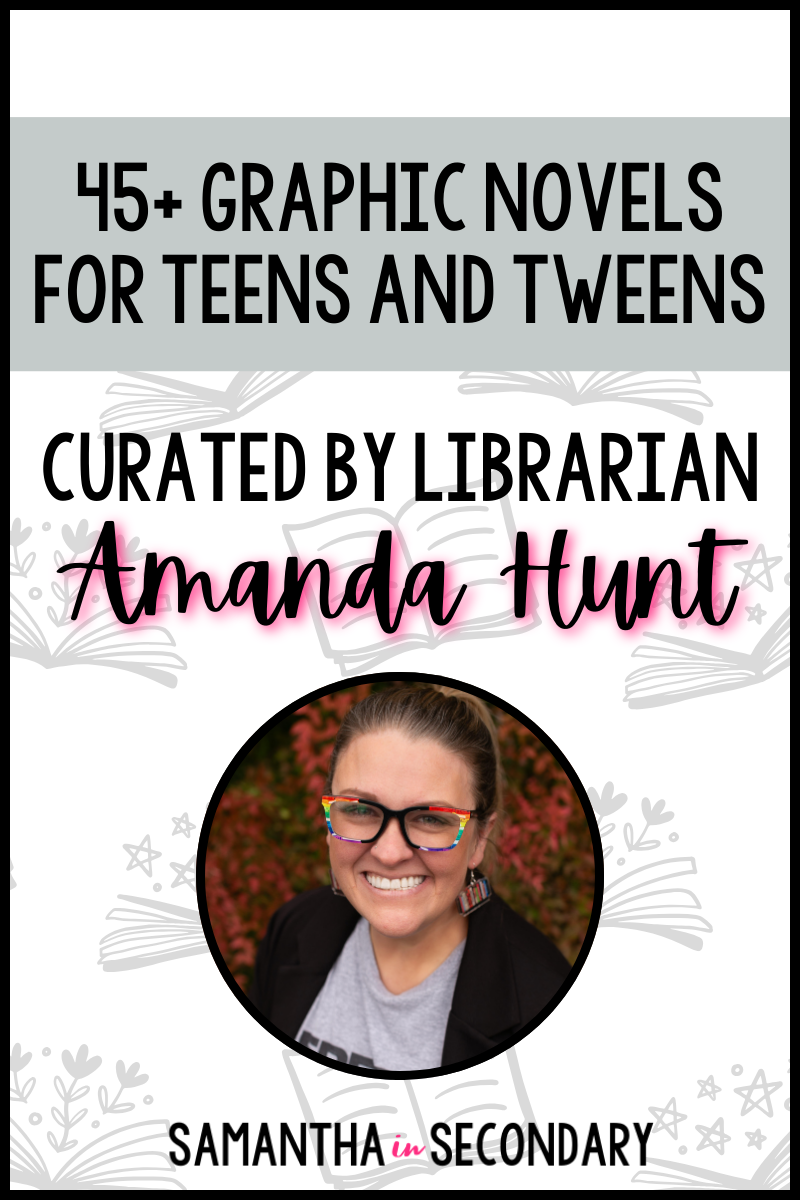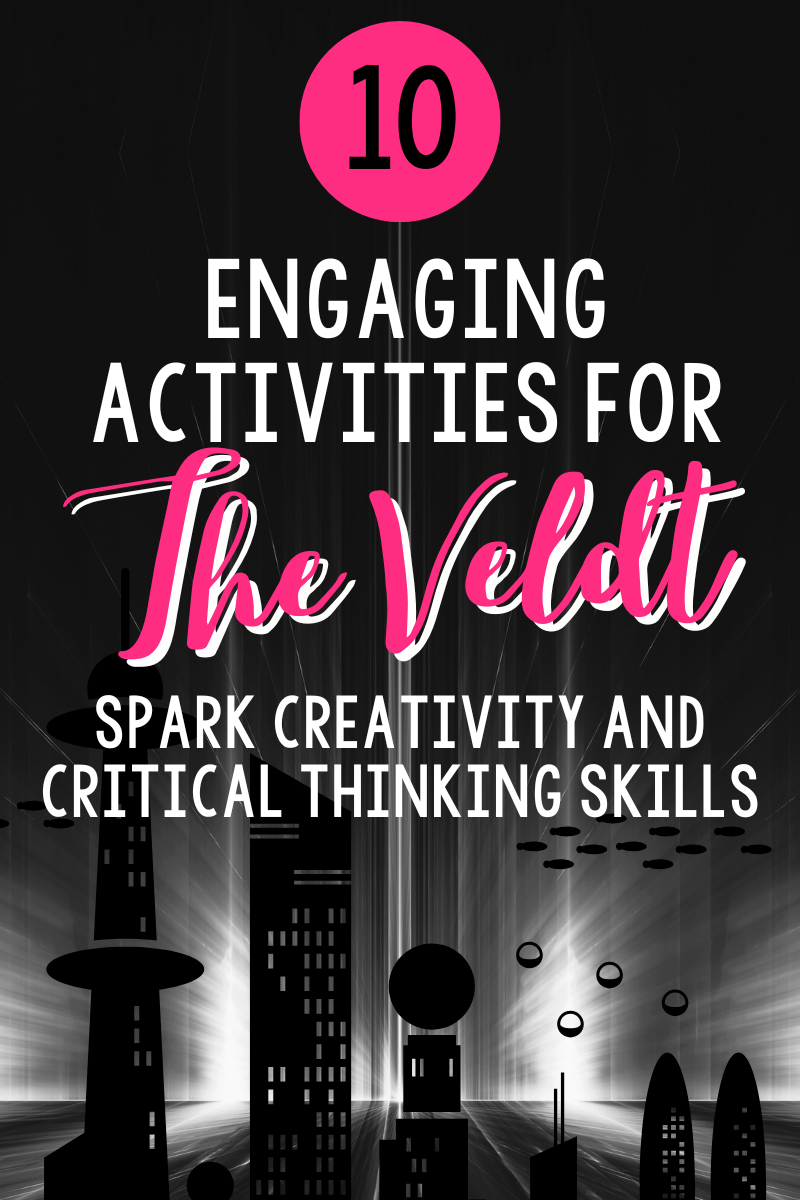Finding engaging winter-themed reading and writing activities can seem difficult, especially if the cold isn’t your favorite season. The lull after the holidays can be challenging in any classroom, especially when students are cranky and checked out. That’s why 12 English Language Arts teachers have come together in this collaborative blog post to bring you creative ideas to warm up and create a winter wonderland even if it takes you an extra cup of coffee to get there. Read on to find something that inspires you to infuse a little winter magic into your own ELA classroom.
#1: Use Hygge to Transform Your Teaching Space
Samantha from Samantha in Secondary just isn’t a fan of the winter, but she found a mindset shift as soon as she discovered hygge. Hygge (pronounced “hoo-ga”) is the Danish concept of cozy contentment. Picture it: a warm beverage in your hands surrounded by cozy blankets, an excellent book in your lap, and a fire crackling in the room. Now, you aren’t going to start a fire in your classroom, obviously, but what other elements could you use to create cozy contentment in your own class in the same spirit?
Here are some ideas:
- Project a virtual fireplace on your board to display during reading time.
- Break out those colored pencils and get your students coloring with Doodle Notes. (Tip: This set works with any story!)
- Hang a few strings of lights to create mood lighting.
- Allow students to bring in a cozy beverage (or get fancy and start the Keurig yourself).
- If your school allows it, consider bringing blankets in on a reading day.
Students love these little touches to help make the winter season more comfortable. For more ways to use hygge in the classroom, check out Samantha’s full blog post here. Nothing helps beat the winter blues like a little cozy contentment.
#2: Explore Winter-Themed Poetry Using The Big Six
If you know Amanda from Mud and Ink Teaching, then you probably know about her love affair with all things poetry. And when it comes to a winter-themed activity for the ELA classroom, she’s got three quick wins that pair poetry with winter. Here are three poetry lessons to embrace the winter chill:
Reset Classroom Culture with “How to Be a Person”
- Every year, Amanda says that this poem delivers. “How to Be a Person” by Shane Koyczan creates a sense of calm and purpose in the classroom. Students listen to his numbered-list poem thinking about all the ways there are to be a decent human. Then, they write their own.
- Here’s the slide deck that Amanda uses to structure the lesson.
Talk about New Year Resolutions with Prince EA
- This poem challenges students to step outside of their comfort zones and step into a life that challenges them.
- The poem also offers a wonderful teaching opportunity for allegory and allusion.
- A full lesson plan is available from Amanda here!
- Prince EA has a long list of fabulous pieces to be studied all year, so be sure to go back to his channel and check out more!
Tackle Winter Poetry with The Big Six
If you haven’t yet gotten started analyzing poetry with The Big Six, you can get a free copy of the analysis tool right here. Then, once you’re feeling confident, here is a quick list of winter-themed poetry to use when practicing analysis:
- “Stopping By Woods on a Snowy Evening” by Robert Frost
- Sonnet 97: How like a winter hath my absence been
- “Winter’s Light” by Roqué Marcelo
- “Return to Winter” by Elaine Terranova
- “Winter to Spring” by Irvin W. Underhill
#3: Imagine Walking in Someone Else’s Boots
“Get your snow boots on and let’s go!” Mom would shout as the snow continued to fall from the winter sky. For Krista from @whimsyandrigor, this formed the basis of many memories growing up in the Midwest. As she and her family trudged through the snow, dragging sleds and carrying a thermos of extra hot, extra chocolate-y cocoa to Valley View Park, sometimes she would stop and notice all the boot prints in the snow.
Reflecting back, Krista realizes maybe she was also imagining what it felt like to walk in those boots. By stepping in the literal prints of another person, her vivid imagination would run wild-Were their toes as cold as hers? Were they holding someone’s hand? Would they rather be in front of the fireplace with a good book as her mother probably would?
As a middle school English teacher today, Krista harnesses the power of playing with perspective in an activity called “Walk with Me.” This lesson focuses on helping students see new perspectives of either real people or fictional characters. It goes like this:
Students choose two characters that have different opinions or points of a view on a single topic. For example, Aven and Conner from the phenomenal middle grade book Insignificant Events in the Life of a Cactus by Dusti Bowling or Will and Shawn from the inimitable Jason Reynolds’s Long Way Down.
Students choose a boot print handout for the first character they will write about. Help students to think analytically about the print they choose. What do the shoes say about the character?
Using the prompts on the handout (Where is this person going? What do they see? What are they remembering?), students will write from that character’s point of view. (This could be in first- or third-person and will create an opportunity to demonstrate how switching perspectives impacts the reader’s experience.)
Students then choose another boot print handout and write from the other character’s point of view. Students should stay focused on the same topic or event explored in the first piece of writing. Push writers to dive deeply into what makes the characters different from one another in order to further refine their understanding.
For both perspectives, students will make inferences about each character and dive into the thoughts, feelings, worries, and hopes embodied within.
If you have time to extend the activity, students could have the two sets of prints meet and engage in a dialogue about the topic each was thinking about. If you teach how to write dialogue, this is an excellent way to have students practice those skills in a creative writing activity.
Krista loves a hallway display and these boot prints will make for a powerful visual. She suggests hanging prints in groups of two so other students and teachers can see the contrasting views side-by-side.
Getting students to metaphorically walk in the shoes of another person is a cornerstone to creating a collaborative and caring community. This classroom activity, rooted in close reading and detailed writing, encourages students to always consider other perspectives, both in literature and in life.
#4: Play a Snowball Fight Review Game
Molly at The Littlest Teacher loves review games for any time of year!
Try this fun winter-themed snowball fight game to review after a novel study, refresh ELA terms and definitions (check out this huge glossary!), review grammar, and more.
What you’ll need:
- Approximately 20-30 review questions, numbered, and printed on paper, 2 to a page; make enough copies so that each student in class will have to answer several questions
- Answer key for questions
- Tape safe to put on the floor (like painter’s tape)
Set up:
- Cut the pages with your review questions in half, so that each question has its own sheet of paper.
- Tape 2 parallel lines down the middle of your classroom, 3-4 feet apart from each other.
- Divide students into 2 teams.
- Crumple each review question loosely into a “snowball.”
- Divide the “snowballs” so that each team gets half of them.
Game play:
- The two teams stand on either side of the tape lines, with the 3-4-foot space separating them.
- Set a timer for 1-2 minutes. From the time you say “go” until the timer goes off, students can throw as many “snowballs” back and forth as they want. The object is to throw as many “snowballs” (review questions) as possible over to the other team, so that they have more questions to answer.
- After the timer goes off, the teams must evenly divide all of the review questions so that each student is answering a few questions.
- Students must write down their answers to the questions.
- The first team that correctly answers all of their review questions wins!
For more details, and more winter and holiday review games, check out this post.
#5: Write to Warm Up with Winter-Themed Prompts
When it’s cold outside and winter feels sooooo long, Lesa from SmithTeaches9to12 likes to infuse a bit of warm weather escapism through writing prompts. Keeping academic rigor in mind, consider how this activity might dovetail with current lessons you have planned with your English class.
Reading a novel? What does character X do on vacation? Create a dialogue between these two characters in this setting. What’s character X’s favorite ice cream flavor? Light, but impactful prompts that require analysis and understanding of the novel, but without predictable reading comprehension questions.
Want to incorporate grammar? Make this an add-on to implement the grammar lesson – focus on commas or correctly using their/they’re/there.
Writing essays? Add this as part of a mini-lesson on paragraph structure, argumentation, or even the use of literary present.
To help you and your students escape the winter blahs, check out this freebie with 10 images and prompts to use with your ELA classes.
#6: Create Character Snow Globes
A great way to beat the winter blahs after returning to class is for students to demonstrate their learning through visual art. Katie from Mochas and Markbooks loves to use a Character Snow Globe activity when analyzing a text for important elements such as symbolism, theme, and characterization. The end result not only enables students to create a visual depiction of their text analysis, but also creates beautiful art that will invigorate your bulletin boards!
- After reading a text, ask students to individually brainstorm an important element of the story, whether this be an item that contains symbolism, an important aspect of the setting, an item or symbol to represent a character, or a visual that could represent a theme.
- Using a snow globe template, students fill the globe with imagery that depicts the elements they brainstormed. There are various ways this activity can be completed – students can draw by hand, cut and paste from magazines, or complete digitally by copying and pasting from the Internet onto a slide. If your students are completing the activity by hand, you can provide additional craft supplies like cotton balls, glitter, felt, yarn, etc. to create something even more compelling.
- You can draw a snow globe template for your students, have them draw one, or use this freebie to get you going!
- As an extension you can choose to have students write a descriptive paragraph about their snowglobe, explaining the item they chose to highlight, and how it relates to the text.
#7: Create a Cozy Atmosphere for Choice Reading
You know that feeling when you take down the holiday decorations and your home feels blah and empty? It can sometimes feel that way in your classroom after the fun, festive activities of December are over and the long stretch from January to Spring Break has begun. In many classrooms, it feels like there’s a switch from fun holiday activities before winter break to full press academics and test prep after break.
Wanting to keep the festivities of December alive all winter long, Carolyn from Middle School Café likes to use a variety of scenic videos from YouTube to set the mood for choice reading time. Reading is such an important life skill and Carolyn wants her students to see reading as something people do for enjoyment.
Carolyn creates a cozy atmosphere for reading by allowing students to read a choice book, sit anywhere they want around the room, dim the lights and run a video of snow falling on the screen. There are several videos to choose from, but here is a cozy scene I’ve recently used. If you are in a snowy climate, this may not have the same effect, but you could also choose a video of a tropical beach.
When students are reading books in a nook around the room, with a video of snow falling on the screen, it helps students see reading as something fun and entertaining. It takes the academics out of reading for just a little bit and allows students to simply enjoy a good story!
#8: Stay Warm with Picture Books
During the colder months, doesn’t everyone just want to be snuggled next to a warm, cozy fire reading a book!? Staci from Donut Lovin’ Teacher loves to take any opportunity to read picture books to students while reviewing key literary techniques or writing skills! Here are five winter themed picture books Staci recommends reading with your middle or high school classes.
- Ten Ways to Hear Snow by Cathy Camper and illustrated by Kenard Park: Lina is on her way to visit Sitti, her grandmother who is losing her eyesight. On the way, she counts all the ways she can hear the snow.
-Skills to review: onomatopoeia, imagery, and character traits
-Sample activity: Work with students to list different sounds of winter in your community and ask students to mimic the style of writing, while students create imagery and onomatopoeia. You might even write a collaborative book as a class! - The Wish Tree by Kyo Maclear and illustrated by Chris Turnham: Neither his brother nor sister thought Charles would be able to find a wish tree, so he sets out with Boggan and discovers some unexpected ways wishes can come true.
-Skills to review: writing summaries, making inferences, and uncovering the theme
-Sample activities: Turn it into a group activity by having students create a Six Word Summary, make movie posters, or design DVD covers. - A Thing Called Snow written and illustrated by Yuval Zommer: Wanting to know what snow is, Fox and Hare go around asking other animals to describe what snow is. The animals use similes to help Fox and Hare try to discover snow during their first winter.
-Skills to review: similes
-Sample activity: Students can create their own similes about snow and work together to create a giant 3D snowflake (if you’re up for the challenge!)
- My Footprints by Bao Phi and illustrated by Basia Tran: After being bullied by kids at school, Thuy starts making footprints in the snow with her moms. They imagine becoming different animals and becoming like them–a spotted leopard that can blend into its surroundings or a grizzly bear that is strong and brave.
-Skills to review: similes and symbolism
-Sample activity: Provide students with a comic strip template and have them add more animals Thuy could imagine while focusing on the skills above. - Wolf in the Snow by Matthew Cordell: This unique, mostly wordless picture book tells the story of a young child who helps a wolf cub find its way home, not knowing they would need the help of the wolf pack to return the favor.
-Skills to review: plot structure, point of view, direct characterization, dialogue, internal thought, or author’s craft
-Sample activity: Have students work on being different narrators by uploading recordings of themselves reading/retelling the story. This would work great as a FlipGrid assignment!
Whether you make it a weekly routine or a week-long routine, invite students to bring a cozy blanket or snuggly friend (you’d be surprised how many stuffed animals still make their way through Staci’s 8th grade classes). This helps to make these reading days extra special! If you’re interested, Staci has a blog post with a list of 9 picture book recommendations for any ELA class if you want to keep the fun going throughout any season!
#9: Practice Inferencing with Winter-Themed Images
While Santa and his reindeer are back at the North Pole getting ready for next year, the snow is here to stay for a few more months. After returning from a long break, Sharena from The Humble Bird Teacher suggests having your students take on the role of a detective to make inferences using wintry images. These photos can include images of sledding, skiing, fishing, drinking hot cocoa, camping, a snowman, and more. All you have to do is follow these steps:
- Find ten images and place them in a PowerPoint
- Show your students the images.
- Then have them follow these steps to make an inference:
Step 1: What do you know about what is happening in the image?
Step 2: What do you see in the image? (Students will just list what they see such as one ball of snow, a house, a man, a boy, a girl, and a woman.)
Step 3: Have students put their responses from Step 1 and Step 2 together to make an inference. (I can infer that the man, boy, girl, and woman are building a snowman because I know that when it snows families enjoy building snowmen together.)
If you want to try this resource with your class for free, grab it here.
#10: Try Philosophical Chairs with a Wintery Twist
Yaddy from Yaddy’s Room loves to engage students in philosophical chairs, especially when they have returned from winter break. Philosophical chairs is an AVID strategy which gets students engaged and practicing how to have disagreements with their peers in a civil academic discussion, a skill that will help them as they move through life. Philosophical chairs after a break can be awesome at getting students academically re-engaged and prepped for the rest of the quarter.
Teachers can try winter themed polarizing topics like “Winter break should be from November to January” or “Schools should be banned from displaying Christmas decorations.” If it’s your first time trying out philosophical chairs you can check out this blog post here where you can find tips, tricks, and ideas on how to make your first activity go as smoothly as possible.
#11: Plan a 4D Walk-Through Poetry Event
Olivia from Distinguished English teaches in sunny Florida, where some of her students have never even seen real snow! Wintery literature didn’t really resonate with them until Olivia helped her students plan a 4D walk-through poetry event using “The Snowman,” by Wallace Stevens.
First, Olivia read the poem aloud to her class and gave them time to look for examples of imagery in small groups.
When everyone felt confident with their examples of imagery, they began to brainstorm ways to bring these examples of the five senses to life. Some students suggested bringing fans to recreate the cold winds, some thought the class could spray artificial Christmas trees with pine-scented room freshener, and others began working on plans for snow cones and sound effects.
Olivia made a list of the students’ ideas and had students sign up to bring the necessary props. Students also volunteered to be prop managers, poem readers, and tour guides!
The class invited students from the younger grades to come tour their 4D poem, and it was a huge success. The younger kids visited a station devoted to each line of the poem as they smelled the pine trees, felt artificial snow, walked through sparkling white cloth, listened to the sound of the wind, tasted snow cones, and finished with an artificial snowball fight.
This project definitely takes some preparation, but it’s one your students won’t soon forget! Read about Olivia’s experience in more detail in this post.
#12: Winter-Themed Holiday Choice Board
Exposure and student choice are two necessities in every classroom, and Simply Ana P believes in providing them whenever possible, even in mini-form. Some of her favorite times to provide quick spaces for them are as icebreakers, journals/bellringers, and enrichment activities for early finishers.
There are countless holidays celebrated year round, but the winter season is especially filled. As a way to expose students to more than just the popularly commercialized holidays, Ana enjoys assigning this choice board. This activity only takes 10 – 15 minutes, but the intrigue and discussions can be extended far beyond.
When students open the activity, the instructions direct them to:
- Look through the choice board options and select a holiday that they are unfamiliar with and/or that they do not celebrate
- Read through the information in the provided link for that holiday
- Pair/share with their table partners about the information they read
- Complete a 3-2-1 reflection piece on their overall investigation
This activity is completely editable, as far as instructions and choices for the board options go. The writing reflection afterward can also be extended if you’re in need of a paragraph writing workshop prompt, or you want to add some grammar piece(s) to assess. Our activities don’t always have to be grandiose to make an impact, and simplicity along with letting students take the wheel can often go a long way.
Hopefully this activities have inspired you to infuse a little winter wonder into your own English Language Arts classroom. Fun winter-themed reading and writing activities can strengthen classroom culture and build on the important reading and writing skills you are already working on in your own classroom without sacrificing rigor.



